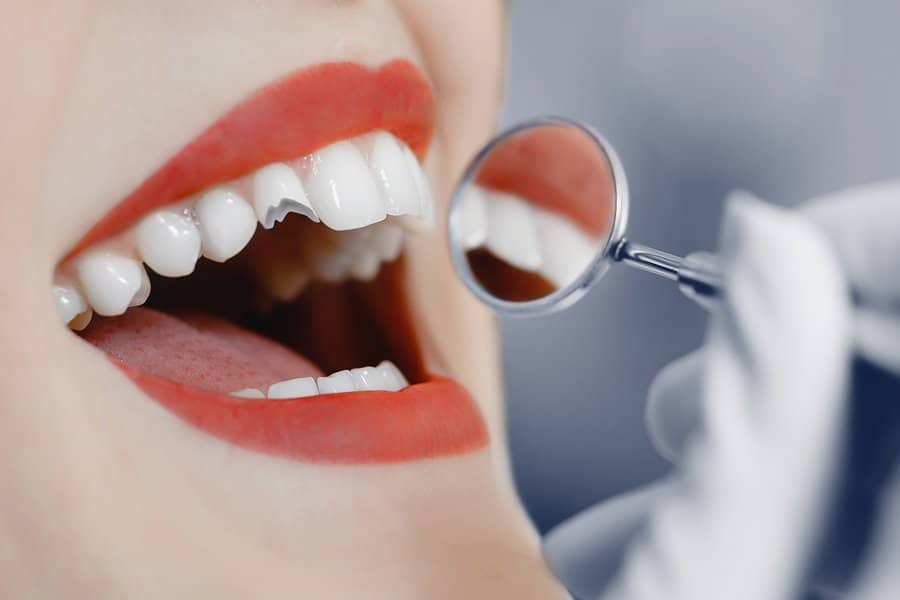- +917892951808
- Indiranagar, Bangalore
Best Dental Clinic In Bangalore Indiranagar | Best Dentist in Bangalore Indiranagar
- Home
- About Us
- Treatments
- Blog
- Contact Us
How dentists fix broken or chipped tooth

How is a chipped or broken tooth fixed?
Although the tooth enamel covering your teeth is the hardest and the most mineralized tissue in the body, its strength has limits. Injuries due to falling, receiving a blow to the face, or biting down on something hard can cause a tooth to chip or break. If your tooth is chipped, broken, or fractured, see your dentist as soon as possible, else, your tooth could be damaged further or become infected, possibly causing you to end up losing the tooth. Here are some possibilities as to why tooth gets chipped or broken- Untreated dental decay
- Teeth that have undergone root canal therapy and have not received a crown
- Teeth with temporary fillings for extended periods of time (generally over a month)
- Accidents
- Assaults
- Biting or chewing unusually hard substances
- Using teeth for purposes other than chewing food
- Extremely forceful clenching or grinding of teeth
- Crooked teeth
Levels of fractures in a tooth
1. Enamel- Craze Line(s) – Cracked enamel without loss of tooth structure
- Chipped Tooth – Cracked and fractured enamel involving loss of this outermost layer of tooth structure
- Horizontal – A horizontal crack in the tooth root
- Vertical – a vertical crack in the tooth root
How dentists fix broken or chipped tooth?
Treatment for a broken or chipped tooth will depend on how severely it is damaged. If only a small piece of enamel has broken off, the repair can usually be done simply in one office visit. A severely damaged or broken tooth may require a more lengthy and costly procedure. 1.Dental bonding – Composite bonding is a way to repair chipped, cracked, decayed, discolored, misshapen, and gapped teeth. If the repair is to a front tooth or can be seen when you smile, the dentist will most likely use a filling material known as composite, which is tooth colored. Bonding is a simple procedure that typically does not require numbing the tooth. To bond a tooth, the dentist first etches its surface with a liquid or gel to roughen it and make the bonding material adhere to it. Next, an adhesive material is applied to the tooth followed by a tooth-colored resin. After shaping the bonding material to look like a natural tooth, the dentist uses ultraviolet light to harden the material. 2. Veneers – Veneers are covers for a tooth. Porcelain veneers (also referred to as dental laminates) are wafer-thin shells that are made out of dental ceramic that is bonded onto the front side of teeth. They're generally about .5 mm to .6 mm thick. That's nearly twice the thickness of an eggshell. 3. Crowns – Crowns are used when a tooth is broken or damaged to the extent that a filling won't restore its natural function. If a large piece of tooth breaks off or the tooth has a too much decay, the dentist may grind or file away part of the remaining tooth and cover it with a crown, or tooth-shaped cap, made to protect the tooth and improve its appearance. Permanent crowns can be made from metal, and porcelain fused to metal, all resin, or all ceramic. All-metal crowns are the strongest. Porcelain and resin crowns can be made to look nearly identical to the original tooth. Types of dental crowns- Metal crowns are made from an alloy such as gold, palladium, nickel or chromium. They are strong enough to hold up to teeth grinding and biting and last the longest. Metal crowns cannot be color matched to teeth and are usually used on molars.
- Resin dental crowns are less expensive, but not as durable. They wear down faster and may not have a long life-span due to a tendency to fracture. A resin is a material most often used for a temporary crown.
- Porcelain fused to metal crowns are stronger because of the metal base, but the porcelain can still chip. These crowns are natural looking and are often used on front teeth and bridges.
- All-porcelain or all-ceramic dental crowns can be color matched to the rest of your teeth, but they tend to wear down the opposing teeth faster than metal crowns. Your dentist may recommend them if you have a metal allergy.
